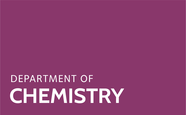G:U mismatches resulting from deamination of cytosine are the most common promutagenic lesions occurring in DNA. Uracil is removed in a base-excision repair pathway by uracil DNA-glycosylase (UDG), which excises uracil from both single- and double-stranded DNA. Recently, a biochemically distinct family of DNA repair enzymes has been identified, which excises both uracil and thymine, but only from mispairs with guanine. Crystal structures of the mismatch-specific uracil DNA-glycosylase (MUG) from E. coli, and of a DNA complex, reveal a remarkable structural and functional homology to UDGs despite low sequence identity. Details of the MUG structure explain its thymine DNA-glycosylase activity and the specificity for G:U/T mispairs, which derives from direct recognition of guanine on the complementary strand.
Escherichia coli
,DNA Damage
,DNA Glycosylases
,Endodeoxyribonucleases
,Deoxyribonuclease (Pyrimidine Dimer)
,N-Glycosyl Hydrolases
,Viral Proteins
,DNA
,DNA, Complementary
,Nucleic Acid Heteroduplexes
,Crystallization
,Crystallography, X-Ray
,DNA Repair
,Amino Acid Sequence
,Protein Binding
,Sequence Homology, Amino Acid
,Substrate Specificity
,Catalysis
,Molecular Sequence Data
,Uracil-DNA Glycosidase




